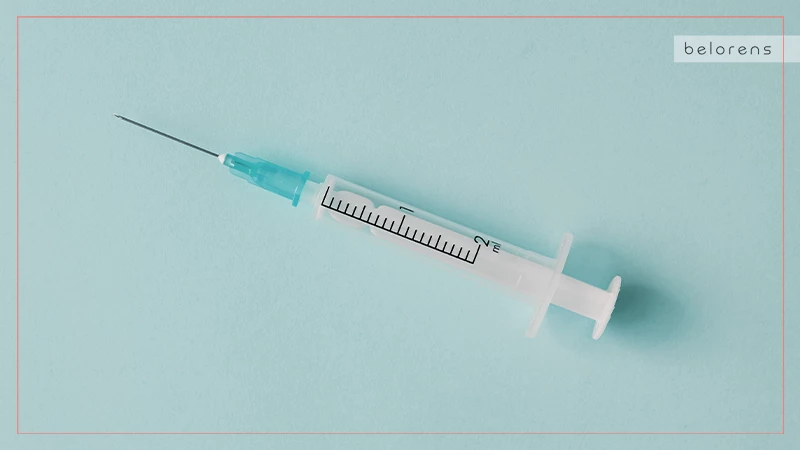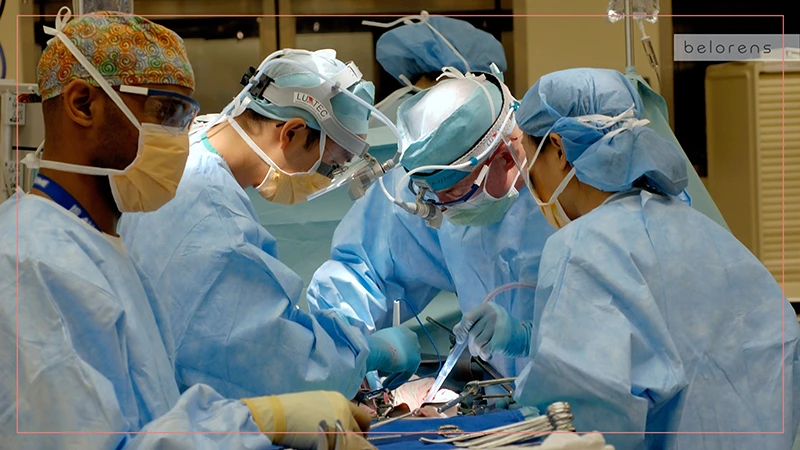Published on 5 Feb 2024
Lumps and Bumps After Liposuction
- ByMedical Content Team
- Medically Reviewed byDr. Sabine Kulhanek
Fact checked

Lumps and Bumps After Liposuction: Causes and Treatment
Liposuction is a popular choice for many people who want to reshape their bodies. However, it's not always a straightforward process. One common issue that people often face after the procedure is the appearance of lumps and bumps in the treated areas. In order to truly grasp the results of liposuction and understand the causes of post-surgery dimples, it's crucial to be well-informed about what to expect after a liposuction procedure, the recovery timeline, and potential complications or side effects.
This article is designed to help you understand these post-surgery changes. We'll explain why they happen, how they're connected to the liposuction process, and what you can do about them. By understanding these aspects, you can have a clearer view of what to expect from your liposuction journey.
What to expect after liposuction
Although liposuction is comparatively less invasive than other surgeries, it still necessitates a recovery period. Typically, initial recovery after liposuction lasts about a week, requiring patients to rest at home.
The first 24 hours after the procedure usually involve fluid discharge from the surgical incisions, a normal occurrence that should stop shortly.
Swelling and bruising are common in the days following surgery. To manage these conditions, a compression garment prescribed by your surgeon should be worn consistently for the first two weeks and half of the day during the third and fourth weeks.

During the first week, adequate rest, hydration, and pain medication as prescribed are necessary. Bathing and showering should be avoided, and it's recommended to move every two hours to prevent blood clots. A follow-up with your surgeon is generally scheduled for the fifth day post-surgery.
Patients are typically fit to return to work by the second week, but strenuous activities and heavy lifting should be avoided for the following three weeks.
Moreover, for a few months post-liposuction, patients are advised against exposing the treated areas to sunlight due to increased skin sensitivity and potential damage to collagen, which could hinder the procedure's effectiveness.
Also Read: 5 Tips to Maintain Liposuction Results for Long
Is lumpy skin after liposuction common?

It's not uncommon for patients to notice lumps post-liposuction. The appearance of these lumps or bumps is more common in large treatment areas such as the abdomen, back, or thighs. They're also more likely in older patients and those with less elastic skin. Skins marked with stretch marks are also more likely to exhibit these irregularities post-surgery.
While the exact statistics vary, it's generally accepted that some degree of irregularity or lumpiness after liposuction can occur quite frequently, especially in the early stages of recovery.
It's important to note that these irregularities often improve over time as the body heals and the swelling decreases. Wearing a compression garment, as prescribed by the surgeon, can help in reducing these irregularities by helping the skin conform to its new contours.
If the lumpiness persists or is causing concern, patients should consult with their doctor or surgeon, as it may be a sign of complications like seromas, hematomas, or fat necrosis. These conditions may require additional treatment.
In conclusion, while a lumpy appearance can be fairly common after liposuction, especially in the early recovery period, most irregularities improve over time and with proper post-operative care.
However, these irregularities might persist for several weeks, even months, post-surgery.
Also Read: Liposuction Diet | A Complete Guide to Pre and Post Liposuction Nutrition Tips
What causes lumps after liposuction?
The primary cause for these lumps is often fluid accumulation under the skin, leading to swelling or inflammation. During liposuction, tunnels created under the skin fill up with bodily fluids, causing uneven swelling. Over time, these tunnels collapse with the aid of a compression garment, assisting in smoothing out the skin surface.
In certain cases, localized hematoma or residual fat may also cause post-surgery bumpiness. These conditions usually improve over time or can be addressed with secondary liposuction.
A surgeon's lack of expertise can also increase the likelihood of post-surgery irregularities. When performed by an unskilled or inexperienced surgeon, there may be a higher chance of post-operative complications, including the appearance of lumps and bumps. Here are some ways this might happen:
Uneven Fat Removal: Liposuction involves the removal of fat cells from specific parts of the body. If the surgeon doesn't remove the fat evenly, it can result in irregular contours or lumpy areas.
Overcorrection: If a surgeon removes too much fat from a particular area, it can cause indentations or depressions in the skin, giving a lumpy appearance.
Improper Cannula Movement: The cannula, which is the tube used to break up and suction out fat, should be moved smoothly and uniformly under the skin. If not done correctly, it can lead to a bumpy or uneven surface.
Ignoring Patient Anatomy: Each person's body is unique, and a good surgeon will take into account factors like the patient's skin elasticity, body shape, and fat distribution. If these are not considered, the results can be less than ideal.
How to treat post-liposuction lumps?
While time often resolves post-liposuction lumpiness, there are several treatments available to expedite the process.
1-Compression Garments
Compression garments are a key part of the post-liposuction recovery process, and they play a crucial role in managing and reducing the occurrence of lumps and bumps after surgery. Wearing compression garments as advised by your doctor can help minimize swelling and support the healing tissues, assisting in skin retraction and smoothing out the treated areas.
2-Message

Special forms of massage, like manual lymphatic drainage therapy (MLD), are often prescribed to help the patient recover faster. These can help to reduce swelling and assist in resolving scar tissue. The main aim of MLD is to stimulate the lymphatic system, which in turn aids in reducing post-surgical swelling, a key factor contributing to the appearance of lumps and bumps.
MLD involves gentle, rhythmic movements that encourage the flow of lymphatic fluid. This can help to reduce swelling and fluid buildup, which are common after liposuction and can contribute to the appearance of lumps. Regular MLD can help to smooth out the unevenness and irregularities in the skin that are often seen post-liposuction.
It's essential to note that MLD should only be performed by a certified therapist who understands the unique needs and precautions for post-liposuction patients. The timing and frequency of MLD sessions should be determined in consultation with your surgeon, based on your individual healing process and recovery timeline.
3-Laser skin tightening
Laser skin tightening is a procedure that uses infrared light to heat the collagen under the skin's surface, causing it to contract and tighten. As a result, the skin's surface becomes smoother, reducing the appearance of irregularities like lumps and bumps. Additionally, the heat stimulates the production of new collagen, further improving skin elasticity and firmness over time.
4-Needle aspiration

Persistent bumps and lumps post-liposuction might be due to fat necrosis. If bumps persist for 3-4 months post-surgery, consult a specialist to diagnose the condition. Diagnostic tests such as X-ray, ultrasound, or MRI may be necessary to determine if fat necrosis is the cause.
In cases of fat necrosis, the dead fat cells can form lumps or oil cysts under the skin. The needle aspiration process involves inserting a thin needle into these lumps to drain the oily content produced by the necrotic fat.
Similarly, seromas are pockets of serous fluid that can accumulate in areas where tissue has been removed, such as after liposuction. These seromas can also cause visible lumps under the skin. Needle aspiration is a common way to drain this fluid and reduce the size of the seroma.
The procedure is typically performed under local anesthesia, meaning the patient is awake but the area being treated is numbed. The doctor will guide a thin needle into the lump or cyst to draw out the fluid or oily content. This procedure can provide quick relief and reduce the size of the lump, but it may need to be repeated if the lump reoccurs.
While needle aspiration can be an effective treatment for certain types of lumps following liposuction, it's not suitable for all kinds of lumps. For example, lumps caused by scar tissue or uneven fat removal might not respond to this method.
5-Surgical intervention

In severe cases, surgical removal of the lump might be necessary. Surgical removal of lumps after liposuction is considered a last resort treatment and is typically reserved for severe cases where non-invasive techniques have failed or aren't appropriate. The specifics of the procedure can depend on the nature of the lump.
It's worth noting that not all lumps are suitable for surgical removal - for instance, if the lumpiness is due to general skin irregularities or minor residual fat, non-surgical treatments may be more appropriate.
Takeaway
Experiencing lumps and bumps following liposuction surgery is quite common. These irregularities are often the result of swelling, inflammation, or residual fat and generally improve over time. Age and skin elasticity can also play a role in the appearance of these post-surgical changes.
The post-operative period is vital, and steps such as wearing compression garments, staying hydrated, and avoiding intense physical activity can aid recovery and help manage these skin irregularities. Compression garments, for instance, reduce swelling and support the skin as it adapts to new contours, helping to minimize the formation of lumps.
Further, treatments like Manual Lymphatic Drainage (MLD), a form of therapeutic massage, and laser skin tightening can be beneficial. In cases where lumps persist or are particularly large, medical interventions such as needle aspiration or surgical removal might be necessary.
However, it's crucial to remember that these are general guidelines and every individual's recovery journey will be unique. Therefore, any concerns about post-liposuction lumps should be addressed with your healthcare provider to determine the best course of action. Overall, understanding what to expect and how to manage these changes can lead to a smoother recovery and improved surgical outcomes.




